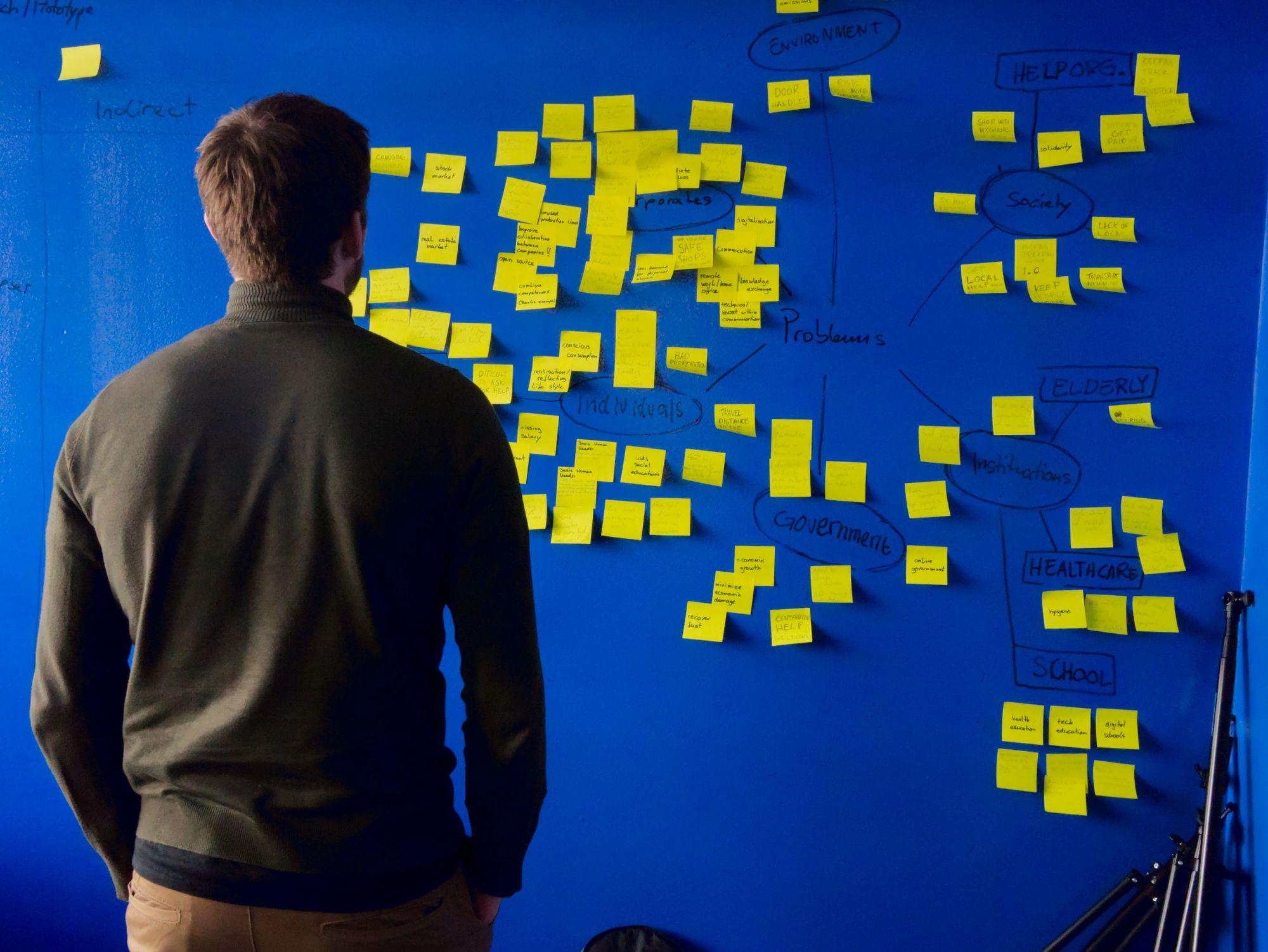Brainstorming is an essential component of generating new and innovative business ideas. However, traditional brainstorming techniques may not always yield the best results. Sometimes, thinking outside of the box is necessary to come up with truly creative and unique ideas that can set a business apart from its competitors.
Out of the box brainstorming involves breaking free from conventional thinking patterns and exploring new and unconventional ideas. This approach can help businesses generate fresh ideas that have the potential to transform their operations and increase their profitability. By taking a unique approach to brainstorming, businesses can discover new opportunities and capitalize on them to gain a competitive edge in their industry.
There are several techniques that businesses can use to encourage out of the box brainstorming. These techniques may include mind mapping, visual brainstorming exercises, and warm-up exercises. By utilizing these techniques, businesses can stimulate creativity and generate innovative ideas that can help them achieve their goals and objectives.
Understanding Out of the Box Brainstorming
Out of the box brainstorming is a technique used to generate new and innovative ideas that are not limited by conventional thinking. The goal is to think creatively and come up with unique solutions to problems or new business ideas. This technique encourages participants to break away from traditional ideas and explore new possibilities.
During an out of the box brainstorming session, participants are encouraged to think freely and share any idea that comes to mind, no matter how unconventional or unrealistic it may seem. The focus is on quantity over quality, as the more ideas generated, the greater the chance of finding a truly unique and valuable solution.
One key aspect of out of the box brainstorming is the creation of a safe and non-judgmental environment. Participants should feel comfortable sharing their ideas without fear of ridicule or rejection. This is achieved by setting ground rules that encourage open communication and respect for all ideas.
Another important aspect of out of the box brainstorming is preparation. Participants should be given some context ahead of the session to get in the correct mindset for the brainstorming session. This can be in the form of a meeting agenda or a brief on the problem or topic at hand. This helps to focus the brainstorming session and ensure that all ideas generated are relevant to the problem or topic being discussed.
Preparing for Out of the Box Brainstorming
Before diving into brainstorming, it's important to prepare properly. This section will cover the key factors to consider when preparing for out of the box brainstorming.
Gathering the Right People
The first step in preparing for out of the box brainstorming is to gather the right people. It's important to have a diverse group of individuals with different backgrounds, experiences, and perspectives. This will help ensure that the brainstorming session is not limited to a single viewpoint and that a wide range of ideas are generated.
It's also important to consider the number of people in the group. While a larger group may seem like a good idea, it can actually hinder the brainstorming process. A group of 5-7 people is often the most effective.
Defining the Purpose
Another important factor to consider when preparing for out of the box brainstorming is defining the purpose of the session. This means identifying the problem or challenge that needs to be addressed and clearly communicating it to the group.
Defining the purpose helps ensure that everyone is on the same page and that the brainstorming session stays focused. It also helps to set expectations for what the group hopes to achieve during the session.
Creating a Safe Environment
Finally, it's important to create a safe environment for out of the box brainstorming. This means creating an atmosphere where everyone feels comfortable sharing their ideas, no matter how unconventional they may be.
One way to create a safe environment is to establish ground rules for the brainstorming session. This can include guidelines such as "no idea is a bad idea" and "listen actively and respectfully."
It's also important to ensure that everyone has an equal opportunity to share their ideas. This means avoiding interruptions and allowing everyone to speak without fear of judgment.
Strategies for Out of the Box Brainstorming
Coming up with creative business ideas requires thinking outside the box. Here are some strategies that can help:
Random Word Generation
Random word generation is a technique that involves generating random words and then using them as inspiration for new ideas. To use this technique, the brainstorming team simply selects a random word and then tries to come up with as many ideas as possible based on that word. This technique can be particularly effective when the team is feeling stuck or uninspired.
Reverse Brainstorming
Reverse brainstorming is a technique that involves looking at a problem from the opposite perspective. Instead of asking "How can we solve this problem?" the team asks "How can we create this problem?" This technique can be particularly effective when the team is struggling to identify the root cause of a problem or when they need to break out of a traditional mindset.
Mind Mapping
Mind mapping is a technique that involves creating a visual representation of ideas and their relationships. To use this technique, the brainstorming team starts with a central idea and then branches out to related ideas. This technique can be particularly effective when the team needs to organize their thoughts and identify connections between different ideas.
Role Playing
Role playing is a technique that involves acting out different scenarios or perspectives. To use this technique, the brainstorming team takes on different roles and then tries to come up with ideas based on those roles. This technique can be particularly effective when the team needs to think about a problem from different perspectives or when they need to break out of a traditional mindset.
SCAMPER Technique
The SCAMPER technique is a mnemonic that stands for Substitute, Combine, Adapt, Modify, Put to another use, Eliminate, and Reverse. To use this technique, the brainstorming team applies each of these techniques to the problem they are trying to solve. For example, they might ask "How can we substitute this component with something else?" or "How can we combine these two ideas to create something new?" This technique can be particularly effective when the team needs to generate a large number of ideas quickly.
Tips for Effective Out of the Box Brainstorming
Brainstorming is a powerful tool to generate creative business ideas. It involves a group of people coming together to share their thoughts and ideas on a particular topic. However, traditional brainstorming methods can sometimes lead to predictable and unoriginal ideas. To get the most out of brainstorming sessions, try these tips for effective out of the box brainstorming:
Encourage Wild Ideas
One of the most important things to remember during a brainstorming session is to encourage wild ideas. Wild ideas are those that may seem unrealistic or impossible, but they can often lead to innovative solutions. When brainstorming, participants should feel free to share any idea that comes to mind, no matter how crazy it may seem. These ideas can then be refined and developed into more practical solutions.
Avoid Criticism
Another key to effective brainstorming is to avoid criticism. Criticism can stifle creativity and prevent people from sharing their ideas. Instead, all ideas should be accepted and considered without judgment. Participants should focus on building upon each other's ideas and creating a positive, collaborative environment.
Set a Time Limit
Brainstorming sessions can sometimes become unproductive if they go on for too long. To prevent this, it's important to set a time limit for the session. This will help keep the group focused and ensure that ideas are generated efficiently. A time limit also encourages participants to think quickly and come up with their best ideas in a shorter amount of time.
Take Breaks
Brainstorming can be mentally exhausting, especially when trying to come up with out of the box ideas. Taking breaks during the session can help participants recharge and come back with fresh ideas. Breaks also provide an opportunity for participants to discuss their ideas and get feedback from others.
Capture All Ideas
During a brainstorming session, it's important to capture all ideas that are generated. This can be done by writing them down on a whiteboard, sticky notes, or using a digital tool. Capturing all ideas ensures that no idea is lost or forgotten. It also allows participants to build upon each other's ideas and develop them further.
Refining and Implementing Creative Business Ideas
Once you and your team have generated a list of potential business ideas, it's time to evaluate and refine them. This section will provide guidance on how to evaluate your ideas, develop a plan, and test and refine your business concept.
Evaluating Ideas
When evaluating your ideas, it's important to consider several factors. First, assess the feasibility of each idea. Is it realistic to execute with the resources available? Second, consider the potential market for each idea. Is there a demand for this product or service? Third, evaluate the competition. Are there already established players in the market? Finally, assess the potential profitability of each idea. Will it generate enough revenue to sustain the business?
Once you have evaluated your ideas based on these factors, narrow down your list to the most promising concepts.
Developing a Plan
With your list of potential business ideas narrowed down, it's time to develop a plan for implementation. This plan should include a detailed description of the product or service, target market, marketing strategy, and financial projections.
It's important to be realistic when developing your plan. Consider the resources available and set achievable goals. Additionally, be open to making changes to the plan as necessary based on feedback and market conditions.
Testing and Refining
Before launching your business, it's important to test and refine your concept. This can involve conducting market research, creating a prototype, or running a pilot program.
During this testing phase, gather feedback from potential customers and make adjustments as necessary. This will help ensure that your product or service meets the needs of the market and is positioned for success.
Once you have refined your concept, it's time to launch your business. Be prepared to adapt and make changes as necessary based on feedback and market conditions.









